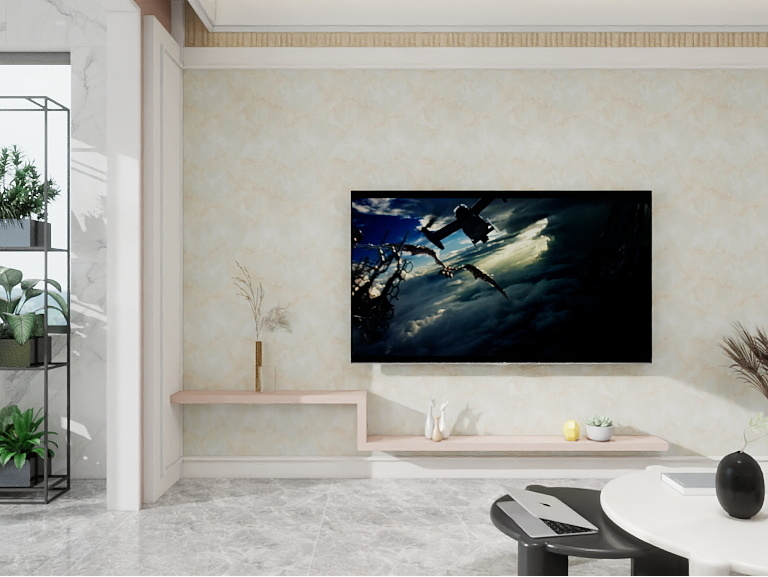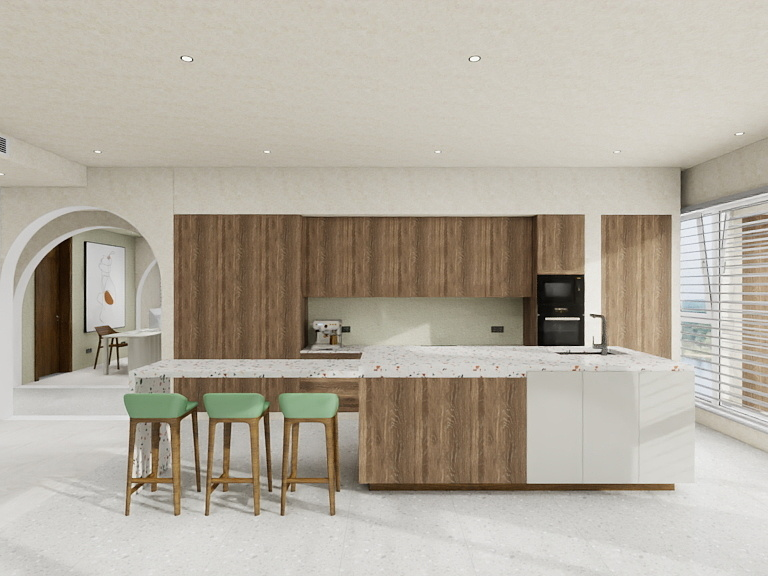Πρακτικός Οδηγός Εγκατάστασης Πανέλ Τοίχου WPC και Ξύλινων Διαδρομών
Με όλο και περισσότερους ανθρώπους να αναζητούν πλέον λύσεις για οικολογικές κατασκευές, τα εξωτερικά τοιχικά πάνελ WPC και οι σύνθετες πλατφόρμες (decking) έχουν κερδίσει τεράστια δημοτικότητα, τόσο σε σπίτια όσο και σε επιχειρήσεις. Τι κάνει αυτά τα υλικά να ξεχωρίζουν; Στην ουσία, χρειάζονται ελάχιστη συντήρηση, αντέχουν σε όλα τα είδη καιρικών συνθηκών και παραμένουν αισθητικά ελκυστικά ακόμα και μετά από χρόνια στην ύπαιθρο. Υπάρχει, όμως, ένα μεγάλο αλλά που σπάνια αναφέρεται: η εγκατάσταση πρέπει να γίνει σωστά, για να μπορέσουμε πραγματικά να απολαύσουμε όλα αυτά τα πλεονεκτήματα. Ας δούμε μερικές αξιόπιστες τεχνικές και επαγγελματικές συμβουλές από ειδικούς που έχουν πραγματοποιήσει εκατοντάδες εγκαταστάσεις τοιχικών επενδύσεων WPC και σύνθετων πλατφόρμων (decks) σε διάφορες εποχές και κλιματικές συνθήκες.
Προετοιμασία για Επιτυχή Εγκατάσταση
Αξιολόγηση της θέσης εγκατάστασης
Η έναρξη σημαίνει να ρίξετε μια καλή ματιά στο πού θα πάνε αρχικά τα πράγματα. Όταν εργάζεστε με πάνελ τοίχου WPC για εξωτερική χρήση, βεβαιωθείτε ότι οι ίδιοι οι τοίχοι είναι εντελώς στεγνοί, χωρίς υλικά απόρριψης και αρκετά δυνατοί ώστε να κρατήσουν όλα τα στοιχεία στη θέση τους. Στις εργασίες με συνθετικά δάπεδα, ελέγξτε αν το έδαφος από κάτω ή οτιδήποτε υποστηρίζει το δάπεδο είναι επίπεδο και δεν θα μετακινηθεί κάτω από τα πόδια σας. Μην ξεχνάτε και την κυκλοφορία του αέρα, καθώς ο σωστός αερισμός μαζί με την καλή αποστράγγιση βοηθά να μη συσσωρεύεται νερό κάτω από αυτές τις σανίδες, κάτι που μπορεί να προκαλέσει διάφορα προβλήματα στο μέλλον.
Σχεδιασμός Διάταξης και Υλικών
Ένας λεπτομερής σχεδιασμός βοηθά στην ελαχιστοποίηση των απορριμμάτων και στη βέλτιστη χρήση των υλικών. Κατά τον σχεδιασμό για επενδύσεις τοίχου WPC, λάβετε υπόψη σας τα διαστήματα διαστολής, τις θέσεις των αρμών και τα εξαρτήματα στερέωσης. Για ξύλινες πλατφόρμες σύνθετων υλικών, σχεδιάστε ένα διάγραμμα που να επιτρέπει την ομοιόμορφη ευθυγράμμιση των σανίδων και την κατάλληλη κυκλοφορία αέρα κάτω από την πλατφόρμα.
Υπολογίστε με προσοχή τις ποσότητες των υλικών, συμπεριλαμβανομένων των βραχιόνων στερέωσης, των βιδών, των δοκών και των προφίλ περιμετρικής ρύθμισης. Παραγγείλετε ελαφρώς περισσότερο υλικό για να καλυφθούν οι απώλειες από κοπές κατά την εγκατάσταση.
Εγκατάσταση WPC εξωτερικό Τα πάνελ τοιχών
Δημιουργία Αξιόπιστης Υποδομής
Εγκαταστήστε ένα πλαίσιο από ξύλινους ή μεταλλικούς ορθοστάτες σε οριζόντια ή κάθετη διάταξη. Η απόσταση μεταξύ των ορθοστατών κυμαίνεται συνήθως από 300 mm έως 500 mm, ανάλογα με το μέγεθος των πανέλ και τις απαιτήσεις φορτίου. Το πλαίσιο αυτό αποτελεί την ασφαλή βάση στην οποία στερεώνονται τα πανέλ.
Βεβαιωθείτε ότι οι ορθοστάτες είναι σε επίπεδο και σωστά ευθυγραμμισμένοι. Χρησιμοποιήστε διαστασιολογητές ή ρυθμιστικά επιπλέοντα όπου είναι απαραίτητο, για να αντισταθμιστούν οι ανομοιότητες της επιφάνειας του τοίχου. Συνιστάται η διατήρηση επαρκών διαστημάτων αερισμού μεταξύ των ορθοστατών και του τοίχου.
Τεχνικές Τοποθέτησης Πανέλ
Ξεκινήστε την εγκατάσταση των πανέλων από το κάτω μέρος προς τα πάνω. Χρησιμοποιήστε βίδες από ανοξείδωτο χάλυβα και ειδικούς σφιγκτήρες στερέωσης για την προσάρτηση των πανέλων στην υποδομή. Σφίξτε σωστά τις αρμούς τύπου «γλώσσα-αυλάκωση» για να δημιουργηθεί ένα συνεχόμενο αποτέλεσμα.
Αφήστε ένα μικρό κενό διαστολής (συνήθως 3–5 mm) ανάμεσα σε κάθε πάνελ για να αντισταθμιστεί η θερμική διαστολή. Βεβαιωθείτε ότι οι αρθρώσεις είναι μετατοπισμένες στις γειτονικές σειρές για δομική σταθερότητα και αισθητική αξία.
Περικοπή και Τελείωμα Ακμών
Χρησιμοποιήστε προφίλ γωνιών ή τρίμματα σχήματος U για να ολοκληρώσετε τις άκρες και τις γωνίες. Αυτά τα εξαρτήματα προστατεύουν τις άκρες των πανέλων και παρέχουν καθαρή, επαγγελματική εμφάνιση. Για εγκαταστάσεις που εκτίθενται σε έντονη βροχή ή ανέμους, σκεφτείτε τη χρήση στρώσεων μεμβρανών υδατοστεγανότητας πίσω από τα πανέλα για επιπλέον προστασία.
Εγκατάσταση Σύνθετων Δοκών Πατωμάτων
Κατασκευή Ισχυρού Πλαισίου Δοκών
Ξεκινήστε με τη δημιουργία μιας σταθερής δομής δοκών, προτιμητέα από αλουμίνιο ή επεξεργασμένο υπό πίεση ξύλο. Οι δοκοί θα πρέπει να απέχουν όχι περισσότερο από 300 mm η μία από την άλλη για οικιακή χρήση, και πιο κοντά για εμπορικές περιοχές. Χρησιμοποιήστε ανθεκτικούς σε διάβρωση συνδετήρες και βεβαιωθείτε ότι οι δοκοί είναι σε επίπεδο σε όλες τις κατευθύνσεις.
Ανυψώστε ελαφρά το πλαίσιο των δοκών από το έδαφος χρησιμοποιώντας ελαστικές παύλες ή ρυθμιζόμενα πόδια. Αυτό βελτιώνει την αποστράγγιση και επεκτείνει τη διάρκεια ζωής του συστήματος ξύλινης πλακόστρωσης.
Στερέωση των Σανίδων
Τοποθετήστε την πρώτη ξύλινη σανίδα κατά μήκος της άκρης, βεβαιώνοντας ότι είναι σωστά στοιχισμένη. Χρησιμοποιήστε κρυφούς συνδετήρες και αρχικά εξαρτήματα για ένα καθαρό τελειωτικό αποτέλεσμα. Συνεχίστε την τοποθέτηση των σανίδων, διατηρώντας σταθερά κενά (συνήθως 5–7 mm) μεταξύ τους για να επιτρέπεται η διαστολή λόγω θερμοκρασίας και η αποστράγγιση του νερού.
Αποφύγετε το υπερβολικό σφίξιμο των βιδών, το οποίο μπορεί να περιορίσει την κίνηση των σανίδων και να οδηγήσει σε στρέβλωση. Ελέγχετε περιοδικά την ευθυγράμμιση καθώς προχωράτε για να αποφύγετε απόκλιση.
Διαχείριση Γωνιών και Μεταβάσεων
Για πατώματα που περιλαμβάνουν γωνίες ή πολυεπίπεδες περιοχές, χρησιμοποιήστε γωνιακά προφίλ σε σχήμα L και πίνακες προσόψεως για να καλύψετε τις εκτεθειμένες άκρες. Σχεδιάστε προσεκτικά τις μεταβάσεις, ιδιαίτερα αν χρησιμοποιείτε διαφορετικά χρώματα ή σχέδια σανίδων, για να διατηρήσετε την οπτική συνέχεια.

Συμβουλές συντήρησης και μακροχρόνιας διάρκειας
Τακτικός Καθαρισμός
Και οι δύο WPC τοιχών ημιάντια και τα ξύλινα πατώματα απαιτούν ελάχιστη συντήρηση. Καθαρίστε τις επιφάνειες περιοδικά με νερό και μαλακή βούρτσα για να αφαιρέσετε σκόνη και θρύψες. Αποφύγετε τη χρήση δυνατών χημικών ή πλυντηρίων υψηλής πίεσης που μπορεί να προκαλέσουν ζημιές στην επιφανειακή υφή.
Έλεγχος Εξαρτημάτων και Αρθρώσεων
Ελέγχετε τα κοχλιά, τα κλιπ και τις αρθρώσεις ετησίως για σημεία χαλάρωσης ή διάβρωσης. Ξανασφίξτε ή αντικαταστήστε όπως απαιτείται για να διατηρήσετε τη δομική ακεραιότητα. Βεβαιωθείτε ότι τα διαστολικά κενά παραμένουν καθαρά και ελεύθερα από εμπόδια.
Αντιμετώπιση Μούχλας και Ασπρομούχλας
Παρότι τα υλικά WPC αντιστέκονται στη σήπια, περιοχές με κακή αερισμό μπορεί να αναπτύξουν επιφανειακή ασπρομούχλα. Καθαρίστε τις πληγείσες περιοχές με ένα διάλυμα ήπιου απορρυπαντικού και μαλακή βούρτσα. Βελτιώστε τον αερισμό εάν η συσσώρευση επαναλαμβάνεται.
Συμβουλές Σχεδίασης για Καλύτερη Αισθητική
Συνδυασμός Υφών Πίνακα και Πατώματος
Χρησιμοποιήστε συνδυασμό διαφορετικών υφών ή επιστρώσεων WPC για να προσθέσετε αντίθεση στον εξωτερικό σας χώρο. Για παράδειγμα, συνδυάστε πάνελ τοίχου με υφή ξύλου με συνθετικές πλακόστρωσης αυλής για να δημιουργήσετε ένα οπτικά πλούσιο περιβάλλον.
Συμφωνία Χρωμάτων
Ταιριάξτε τα χρώματα των πλακών πατωμάτων με τα παρακείμενα πάνελ τοίχου, συστήματα περιφράξεων ή χαρακτηριστικά τοπίου. Ουδέτερες αποχρώσεις, όπως γκρι άνθρακα, τέκτονας και καρυδιά, προσφέρουν αιώνια γοητεία και είναι εύκολο να συνδυαστούν με διάφορα στοιχεία σχεδίασης.
Φωτισμός και Αξεσουάρ
Ενσωματώστε ενσωματωμένα φώτα στα πατώματα ή επισημάνετε τα πάνελ τοίχου με κάθετα στοιχεία κήπου ή πλαίσια φωτιστικών. Εξαρτήματα, όπως δοχεία, παγκάκια ή περγκόλες, μπορούν να ενισχύσουν τόσο τη λειτουργικότητα όσο και το στυλ.
Συχνές Ερωτήσεις
Μπορώ να εγκαταστήσω πάνελ WPC ή πάτωμα μόνος μου;
Ναι, πολλά προϊόντα WPC έχουν σχεδιαστεί για εγκατάσταση φιλική προς DIY (κάντο-μόνος-σου). Ωστόσο, για πολύπλοκα σχέδια ή μεγάλες επιφάνειες, συνιστάται η επαγγελματική εγκατάσταση για καλύτερα αποτελέσματα.
Ποια εργαλεία χρειάζομαι για να εγκαταστήσω συνθετική πλακόστρωση;
Θα χρειαστείτε εργαλεία ξυλουργικής όπως κυκλικό πριόνι, στρεπτικό, αλφάδι και μετροταινία. Χρησιμοποιείτε πάντοτε συνδετήρες και εξαρτήματα που συνιστά ο κατασκευαστής.
Είναι τα προϊόντα WPC ανθεκτικά στις καιρικές συνθήκες και στην υπεριώδη ακτινοβολία;
Ναι, τα ποιοτικά πάνελ τοίχου και ξυλόπατα WPC έχουν σχεδιαστεί για να αντέχουν στην υγρασία, τις υπεριώδεις ακτίνες και τις διακυμάνσεις θερμοκρασίας, καθιστώντας τα κατάλληλα για όλα τα κλίματα.
Πόσο διαρκούν τα προϊόντα WPC συνήθως;
Με σωστή εγκατάσταση και συντήρηση, τα εξωτερικά τοιχοποιΐας και ξύλινα δάπεδα WPC μπορούν να διαρκέσουν 15–25 χρόνια, ανάλογα με την ποιότητα του προϊόντος και τις περιβαλλοντικές συνθήκες.

